39 class labels in data mining
Noisy Data in Data Mining | Soft Computing and Intelligent Information ... 1. Class noise (label noise). This occurs when an example is incorrectly labeled. Class noise can be attributed to several causes, such as subjectivity during the labeling process, data entry errors, or inadequacy of the information used to label each example. Two types of class noise can be distinguished: Classification and Predication in Data Mining - Javatpoint Classification is to identify the category or the class label of a new observation. First, a set of data is used as training data. The set of input data and the corresponding outputs are given to the algorithm. So, the training data set includes the input data and their associated class labels.
In data mining what is a class label..? please give an example The term class label is usually used in the contex of supervised machine learning, and in classification in particular, where one is given a set of examples of the form (attribute values, classLabel) and the goal is to learn a rule that computes the label from the attribute values. The class label always takes on a finite (as opposed to inifinite) number of different values.

Class labels in data mining
Class labels in data partitions - Cross Validated Using a method like stratified sampling, you would make certain that each class is represented by randomly selecting instances of that class for each data set. If you are running into this problem, you also might question whether you have enough data to train your algorithm well. Classification-Based Approaches in Data Mining - GeeksforGeeks In this phase, training data are analyzed by a classification Algorithm. Classification Step: it's a step where the model is employed to predict class labels for given data. In this phase, test data are wont to estimate the accuracy of classification rules. Basic algorithms of classification: Decision Tree Induction Naïve Bayesian Classification Data Mining Classification Simplified: Steps & 6 Best Classifiers Data Mining has two main types of Classification Categories available: Generative Classification Discriminative Classification Now let us understand the two Data Mining Classification categories in detail. 1) Generative Classification
Class labels in data mining. What Is Data Labeling in Machine Learning? - Label Your Data A label or a tag is simply an identifying element that explains what a piece of data is. For an image, this might be telling a model that there is a person or a tree. For an audio recording, an annotator writes the words that are being said. The labels let the ML model learn by example. You don't explain what a car is. Data Mining - Classification & Prediction - tutorialspoint.com There are two forms of data analysis that can be used for extracting models describing important classes or to predict future data trends. These two forms are as follows −. Classification. Prediction. Classification models predict categorical class labels; and prediction models predict continuous valued functions. Classification & Prediction in Data Mining - Trenovision The class labels of training data is unknown. Given a set of measurements, observations, etc. with the aim of establishing the existence of classes or clusters in the data. Classification—A Two-Step Process. Model construction: describing a set of predetermined classes Each tuple/sample is assumed to belong to a predefined class, as ... What is a "class label" re: databases - Stack Overflow The class label is usually the target variable in classification. Which makes it special from other categorial attributes. In particular, on your actual data it won't exist - it only exist on your training and validation data sets. Class labels often don't reliably exist for other data mining tasks. This is specific to classification.
Classification in Data Mining Step 2: If tuple in D are all of the same class, 'C', then go to step 3 Step 3: Return 'N' as a leaf node labeled with the majority class in 'C' Step 4: If attribute list is empty, then return 'N' as a leaf node labeled with the majority class in D. Step 5: Apply attribute_selection_method (D, attribute _list) to find the "best" splitting criteria. Decision Tree Algorithm Examples in Data Mining - Software Testing Help Example of Creating a Decision Tree. (Example is taken from Data Mining Concepts: Han and Kimber) #1) Learning Step: The training data is fed into the system to be analyzed by a classification algorithm. In this example, the class label is the attribute i.e. "loan decision". Data mining — Class label field - IBM Class label field. To predict a classification, you must specify the input fields to be classified and the class label field. The class label field is also called target field. The class label field contains the class labels of the classes to which the records in the source data were attributed during the historical classification. Data Mining - (Class|Category|Label) Target - Datacadamia A class is the category for a classifier which is given by the target. The number of class to be predicted define the classification problem . A class is also known as a label.
50 selected papers in Data Mining and Machine Learning Partially-Supervised Learning / Learning with Uncertain Class Labels. Get Another Label? Improving Data Quality and Data Mining Using Multiple, Noisy Labelers, V. Sheng, F. Provost, P. Ipeirotis, in Proceedings of the 14th ACM SIGKDD International Conference on Knowledge Discovery and Data Mining, 2008. Basic Concept of Classification (Data Mining) - GeeksforGeeks Classification: It is a data analysis task, i.e. the process of finding a model that describes and distinguishes data classes and concepts. Classification is the problem of identifying to which of a set of categories (subpopulations), a new observation belongs to, on the basis of a training set of data containing observations and whose categories membership is known. (PDF) DATA MINING CLASSIFICATION TECHNIQUES ON THE ... - ResearchGate Data mining is an analytic process designed to examine large amounts of data in search of valuable and social hidden knowledge. The purpose of data mining is to look for desired trends or patterns ... Classification of Product Rating Using Data Mining Techniques Abstract. Data mining is the procedure to find patterns and necessary details from huge amount of data collected from various sources for a period of time. The target of our research is to classify the rating of individual products in an online shopping website based on price, discount, number of items left, sellers, count of likes and seller ...
Data Mining - Tasks - tutorialspoint.com Classification is the process of finding a model that describes the data classes or concepts. The purpose is to be able to use this model to predict the class of objects whose class label is unknown. This derived model is based on the analysis of sets of training data. The derived model can be presented in the following forms −
What is the difference between classes and labels in machine ... - Quora CLASS: It is the category or set where the data is "labelled" or "tagged" or "classified" to belong to a specific class based... Class label is the discrete attribute having finite values (dependent variable) whose value you want to predict based on...
Various Methods In Classification - Data Mining 365 Classification is the data analysis method that can be used to extract models describing important data classes or to predict future data trends and patterns. Classification is a data mining technique that predicts categorical class labels while prediction models continuous-valued functions.
Data Streams in Data Mining Simplified 101 - Learn | Hevo There are four main algorithms used for Data Streams in Data Mining techniques. Image Source: Self 1. Classification Classification is a supervised learning technique. In classification, the classifier model is built based on the training data (or past data with output labels).
MMAC: a new multi-class, multi-label associative classification ... Building fast and accurate classifiers for large-scale databases is an important task in data mining. There is growing evidence that integrating classification and association rule mining together can produce more efficient and accurate classifiers than traditional classification techniques. In this paper, the problem of producing rules with multiple labels is investigated. We propose a new ...
Classification in Data Mining Explained: Types, Classifiers ... Classification in data mining is a common technique that separates data points into different classes. It allows you to organize data sets of all sorts, including complex and large datasets as well as small and simple ones. It primarily involves using algorithms that you can easily modify to improve the data quality.
Data mining - Class label field The class label field is also called target field. The class label field contains the class labels of the classes to which the records in the source data were attributed during the historical classification. To identify customers who have allowed their insurance to lapse, you can specify the data fields that are shown in the following table:
13 Algorithms Used in Data Mining - DataFlair That is to measure the model trained performance and accuracy. So classification is the process to assign class label from a data set whose class label is unknown. e. ID3 Algorithm. This Data Mining Algorithms starts with the original set as the root hub. On every cycle, it emphasizes through every unused attribute of the set and figures.
The Ultimate Guide to Data Labeling for Machine Learning - CloudFactory Labels are what the human-in-the-loop uses to identify and call out features that are present in the data. It's critical to choose informative, discriminating, and independent features to label if you want to develop high-performing algorithms in pattern recognition, classification, and regression.
Data Mining Classification Simplified: Steps & 6 Best Classifiers Data Mining has two main types of Classification Categories available: Generative Classification Discriminative Classification Now let us understand the two Data Mining Classification categories in detail. 1) Generative Classification
Classification-Based Approaches in Data Mining - GeeksforGeeks In this phase, training data are analyzed by a classification Algorithm. Classification Step: it's a step where the model is employed to predict class labels for given data. In this phase, test data are wont to estimate the accuracy of classification rules. Basic algorithms of classification: Decision Tree Induction Naïve Bayesian Classification
Class labels in data partitions - Cross Validated Using a method like stratified sampling, you would make certain that each class is represented by randomly selecting instances of that class for each data set. If you are running into this problem, you also might question whether you have enough data to train your algorithm well.

![PDF] A modified multi-class association rule for text mining ...](https://d3i71xaburhd42.cloudfront.net/cb980cfaabe67bcff49c5da1c8d13fc38329c426/111-Figure4.4-1.png)
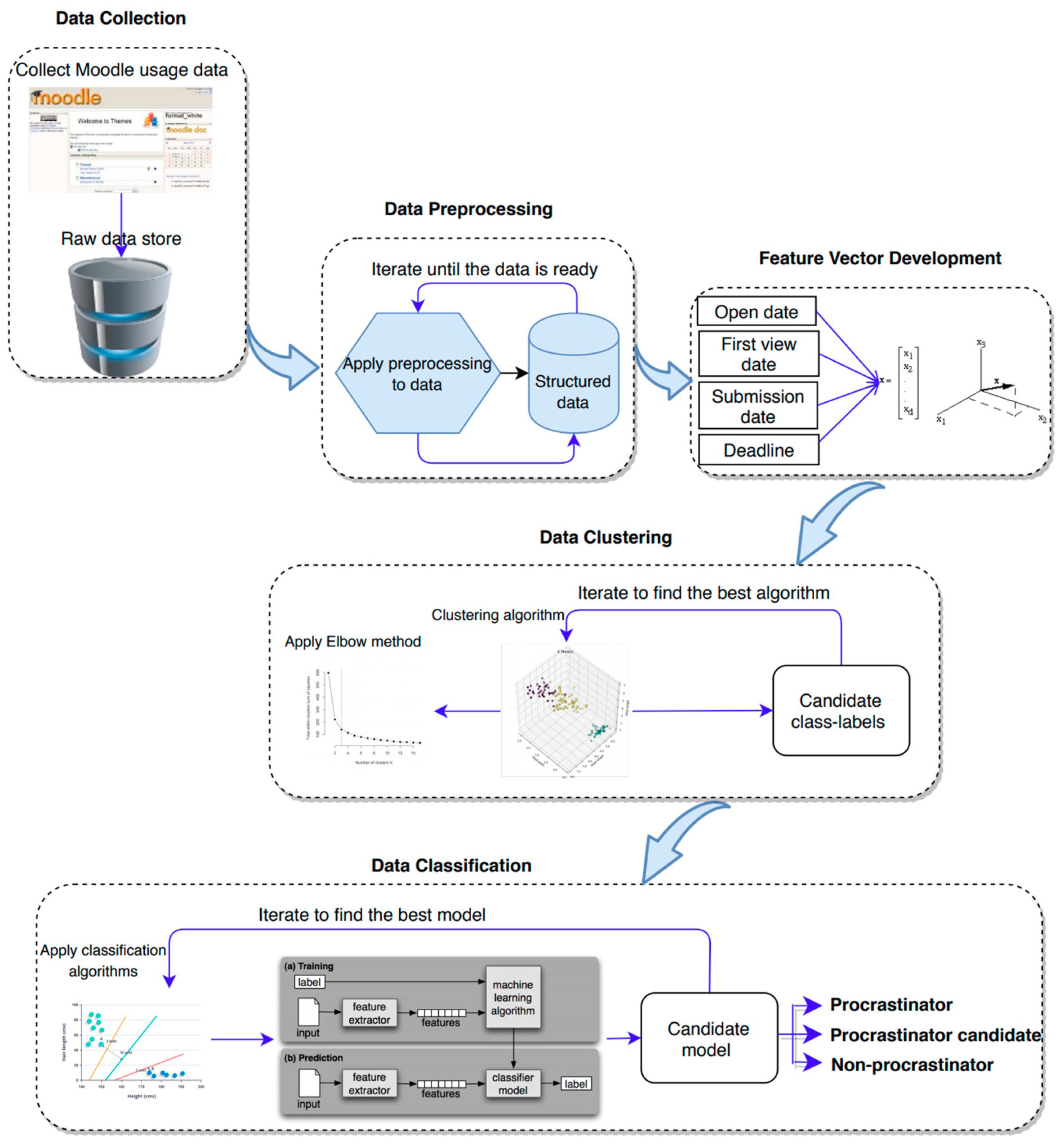

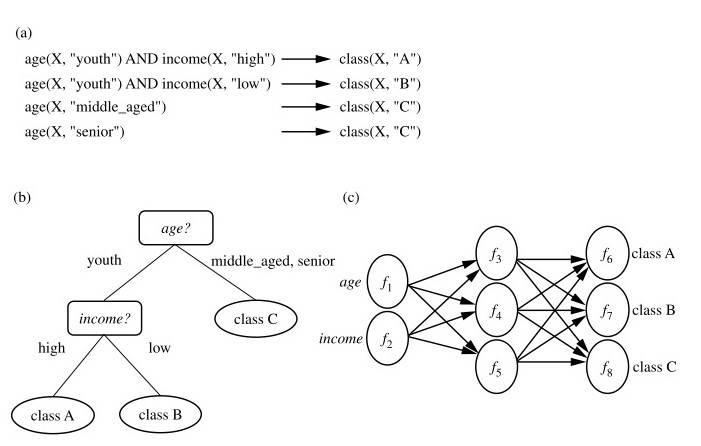
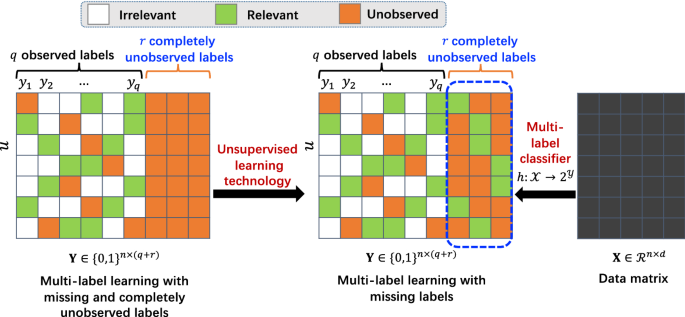
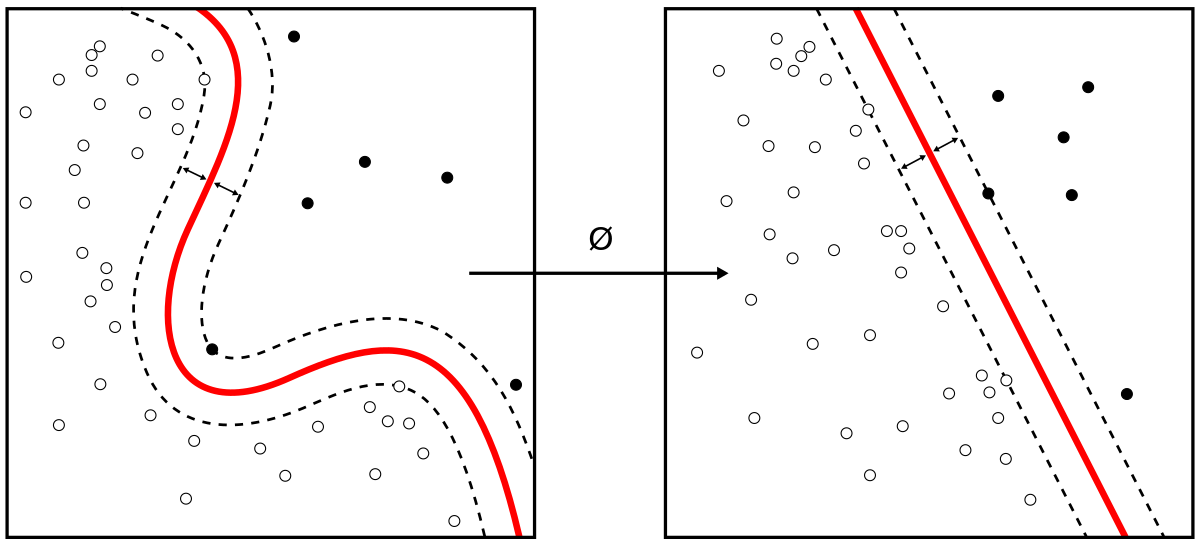



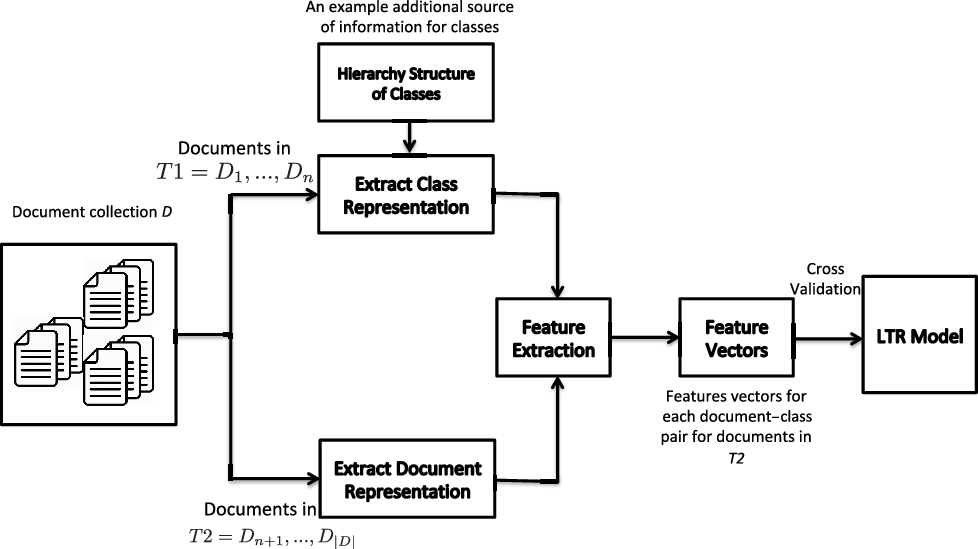


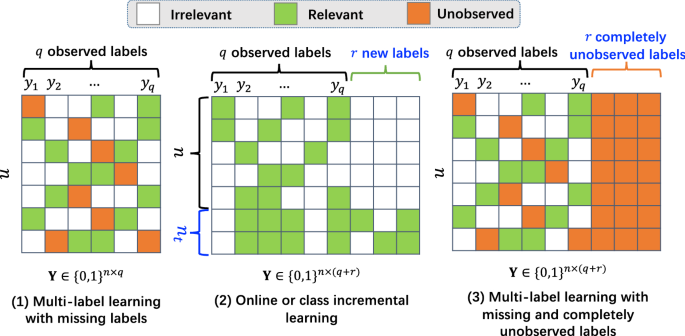

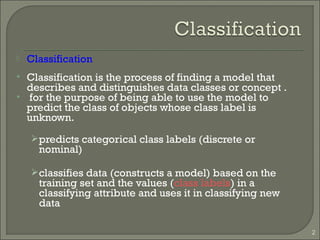






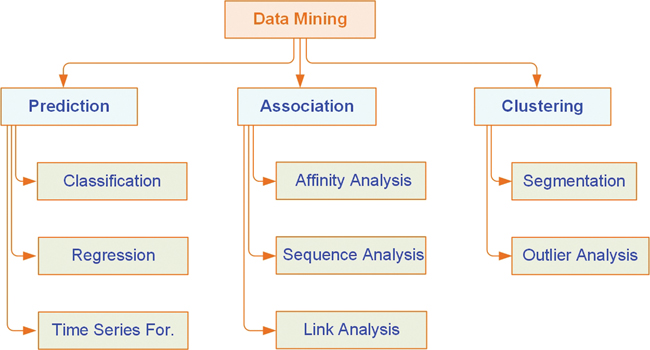

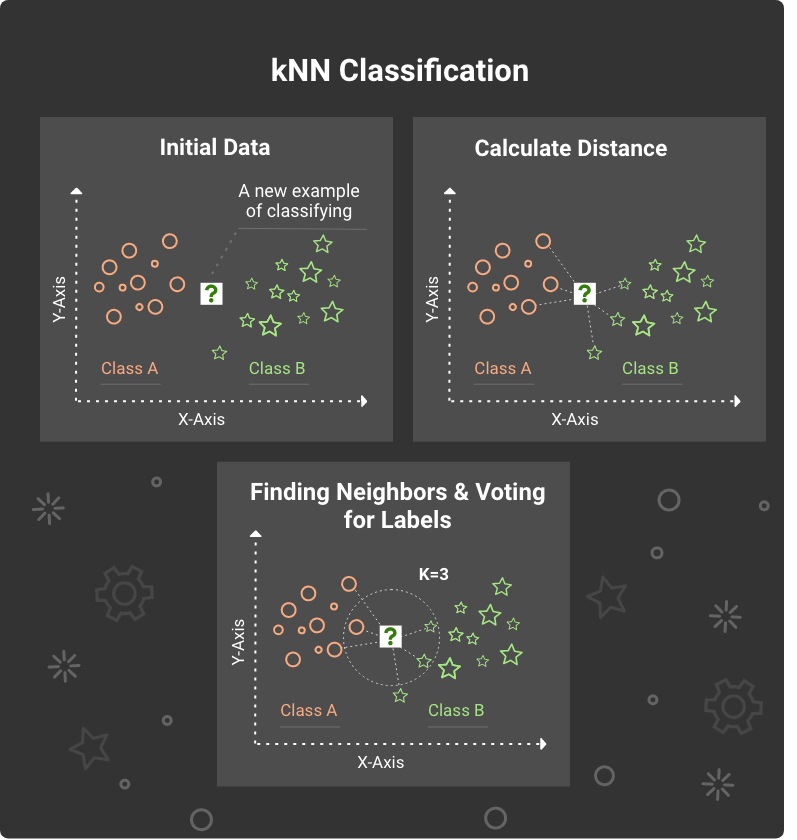
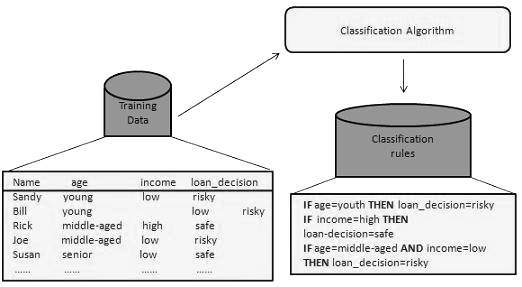



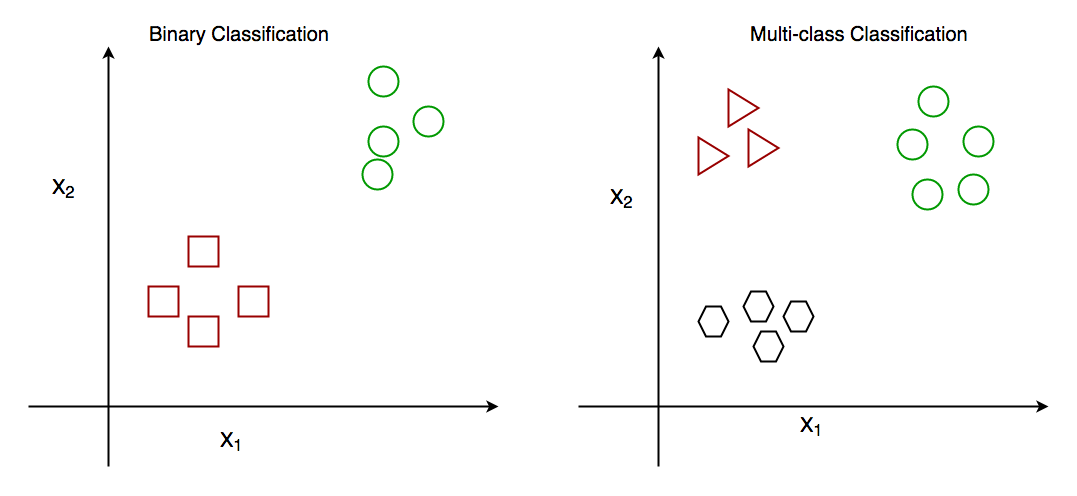




Post a Comment for "39 class labels in data mining"